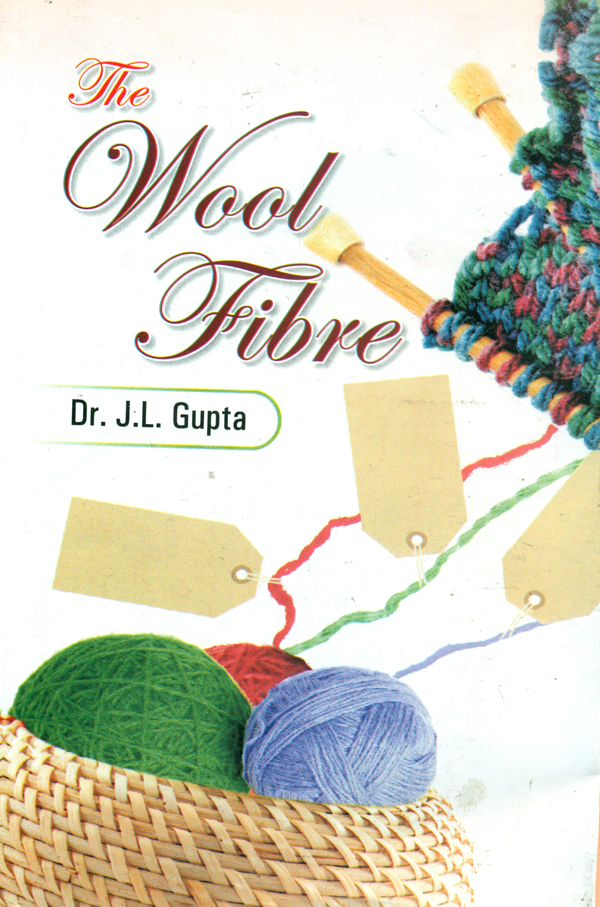Pratibha Sharma
Name of Book : The Wool Fibre
Author Dr. J L Gupta
Publishers : Yak Publishing Channel, Chowk Chabutra, Jammu
Year of Publication 2013
The Yak Publishing Channel has brought out an authoritative and exhaustive book “Wool Fabric” on the quantitative and qualitative production of wool. Rajiv Gupta, Managing Director of the publishing house has shown vision and vigour to put out an authentic book on wool, which is an important component of Jammu and Kashmir’s economy and has vast avenues of employment. Since time immemorial our State has been famous for its products of high quality wool. A large segment of our population in this part of the country is, directly and indirectly, connected with sheep breeding and wool production.
An expert Dr J L Gupta, who retired as Director, Sheep Husbandry has authored the book based on his long experience as also intimate knowledge of the potential and the opportunities in the fast-growing market.
In the hilly and suitable climatic conditions in Jammu and Kashmir, the sheep rearing and quality wool production has captured the markets in and outside the country. The wool from this State bears the stamp of quality and has always been on demand over long years. The Pashmina shawls, Carpets, Namdas, Gabbas and blankets have always dominated the markets as popular demands are made for these quality products.
The 267-page book vividly describes in details the different types of sheep and other fibre animals giving all the necessary technical details for Jammu and Kashmir State and also across the country. Dr Gupta has underlined the need for promotion of sheep breeding for generating gainful employment avenues and gearing up economy of the State.
The Yak Publishing Channel has a number of books mostly related to varied subjects with well research work by specialists and eminent writers for the benefit of readership. This latest publication “Wool Fabric” is first of its kind and much related to the states like Jammu and Kashmir, Rajasthan, Himachal Pradesh with suitable strategies for raising productivity and quality of wool fabrics. This book is valuable for those connected, directly and indirectly with the production of wool and wool industry. It is useful for the administrators, planners, academicians, students, wool workers and officials of the Sheep Husbandry Department.
Wool and woolen’s are an in-separable part of life style in clothing, furnishing by the people across the globe. Wool is a natural fibre growing as body coat of sheep. It is all pervasive fibre from early civilizations to present times. Being eco-friendly, it is likely to remain a choice fibre for warming up the humanity in future too.
Wool production entails maintenance and rearing of domestic sheep. This in turn provides livelihood to millions, the world over. In India too a sizeable population of tribals, nomads, rural and landless sections of the society is engaged in this profession. There is another bulk class of workers and artisans in rural and urban areas; cottage and organized sectors that earn their livelihood through wool fibre processing, knitting, weaving and manufacture of multi-variety wool wear, carpets, blankets, shawls, hosiery and a variety of woolens material.
The present attempt to bring out this book ‘The Wool Fibre’ is, therefore, a welcome effort on the part of author and also the publisher who have ventured to explore the vast potential of sheep breeding, higher productivity of quality wool on scientific lines. Dr Gupta has put in his head and heart in the compilation of information and data in this book. His long experience of almost four decades as manager, research worker, scientist and teacher in sheep and wool is amply reflected in this work. He has also authored a couple of other publications.
The first chapter deals with introduction to industrial utility fibres while the remaining eight are devoted mainly to wool, its production, harvesting, qualities, quality testing, grading, marketing, processing and utilization. A score of processes involved in collection and processing of wool fibre right from the shearing to its finished product are aptly dealt. The development of quality wools and furs, particulars of institutions of research and development as also different programmes have also been discussed.
In the last chapter the author has elucidated a scientific innovative scheme to synthesise ‘prime carpet wool’ within the region. Simultaneously sheep breeding approach stands elaborated for increasing fine wool (as well as mutton) production potential of indigenous / existing sheep fauna.
Realising the importance of wool in the overall economy, the State Government has rightly kept the raw-wool in zero rated list of VAT. However, Pashmina wool which attracted 13.5 percent VAT has also been completely exempted now.
The information spanning over nine chapters is illustrated with tables, drawings and vital photographs which has made it a valuable guide and reference book for the beginners, animal fibre producers, industrial wool workers, the textile man and the wool exporter-importer, besides the research worker as well as sheep breeders. The get-up of the book is attractive but the price seems slightly high for the student and common man connected with woolen industry.
(Starline Syndicate Service)


